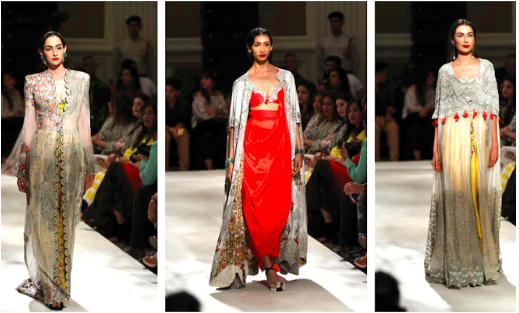Experience the Beauty of Typical Eastern Attire
Start a journey through the complex globe of typical Eastern attire, where each garment tells a tale woven with cultural richness and historical relevance. From the vibrant hues of a Chinese qipao to the regal style of a Pakistani shalwar kameez, these garments use a look into a globe where workmanship satisfies virtuosity. The blend of glamorous materials and delicate needlework techniques develops a tapestry of beauty that transcends boundaries and time. Join us as we unravel the keys behind these beautiful pieces and uncover the allure of Eastern clothing that has captivated generations.
Background of Eastern Attire
Eastern clothes has a rich history that dates back centuries, reflecting the varied societies and customs of areas such as Asia and the Middle East. In Asia, conventional clothes varies significantly from the colorful saris worn in India to the classy bathrobe of Japan.
Throughout background, Eastern clothes has not only served as a form of clothing but also as a sign of cultural identification and heritage. Today, Eastern clothing proceeds to evolve, mixing conventional elements with modern fashion fads to create classic and distinct designs.
Importance of Embroidery
Embroidery plays an important duty in conventional Eastern clothes, including intricate information and social relevance to garments that have actually been passed down with generations. In Eastern societies, needlework is not simply ornamental yet holds deep symbolic significances. Each stitch and pattern can share tales, beliefs, and also social status.
The art of embroidery in standard Eastern attire is a labor-intensive process that calls for skill and persistence. Very experienced artisans meticulously hand embroider detailed designs onto fabrics making use of strategies that have been improved over centuries. These stitched styles frequently reflect the abundant cultural heritage of the region they stem from, showcasing themes influenced naturally, mythology, or historical occasions.

Extravagant Fabrics Utilized
Extravagant fabrics play a pivotal role in improving the elegance and luxury of standard outfit across diverse Eastern cultures. Silk, renowned for its gentleness and luster, is a popular option for lots of conventional garments as a result of its lavish feeling and capacity to drape with dignity. In nations like India, China, and Japan, silk has a long background of being made use of in typical clothes, symbolizing wealth and condition.
One more widely utilized lavish fabric is brocade, defined by elaborate patterns woven right into the material. Brocade adds a touch Full Report of elegance to garments and is usually seen in ritualistic attire and official wear. Velvet, with its plush structure and rich look, is also a prominent choice for standard clothes in Eastern societies, specifically for special events and cheery occasions.
Furthermore, satin, fabric, and chiffon are often used for their light-weight and flowing top qualities, adding a sense of delicacy and style to garments. These glamorous fabrics not only raise the aesthetic charm of traditional Eastern outfit yet also contribute to the total appeal and beauty of the wearer.
Workmanship Techniques
Conventional clothes in different cultures showcases remarkable workmanship methods that are passed down with generations, highlighting the ability and virtuosity associated with creating these beautiful garments. Each stitch, embroidery, and embellishment is carefully crafted to create ageless items that symbolize the cultural heritage and customs of the area. The workmanship techniques utilized in conventional Eastern outfit frequently include detailed handwork, such as hand weaving, hand embroidery, and hand beading, which need accuracy and More about the author focus to detail.
Artisans that specialize in these strategies go through years of training to perfect their skills and understand the typical approaches of garment building and construction. Using high-grade products integrated with specialist craftsmanship leads to garments that not just look visually stunning however additionally stand the examination of time. The devotion to protecting these craftsmanship methods makes sure that each item of typical Eastern clothing is a job of art, showing the abundant cultural background and heritage of the region.
Ageless Beauty and Elegance

The elaborate needlework, fragile beadwork, and lavish fabrics made use of in standard Eastern attire add to its unrivaled elegance. The careful creation passed down through generations makes certain that every piece emanates and tells a tale class and elegance.
Moreover, the classic shapes and elegant draping of conventional Eastern attire include in its long-lasting appeal. The flowing lines and classy designs produce a feeling of consistency and equilibrium that is both visually enticing and emotionally captivating.
Basically, the timeless sophistication and elegance of conventional Eastern attire serve as a testament to the ability and creativity of the craftsmen who dedicate their lives to maintaining these splendid sartorial traditions. - eastern wear pakistan
Conclusion
In conclusion, the elegance of traditional Eastern attire is a testimony to the rich background, social importance, and elaborate workmanship of the area. From the intricate needlework to the lavish fabrics and timeless appeal, each garment informs a tale and mirrors the social identification of its beginnings. Embracing Eastern clothing enables one to appreciate the creativity and beauty that have been passed down through generations, producing captivating and absolutely splendid pieces.
Embark on a trip with the complex globe of conventional Eastern clothes, where each garment tells a story woven with cultural richness and historical significance.Embroidery plays a crucial function in standard Eastern attire, adding complex details and social importance to garments that have been passed down with generations.Glamorous textiles play a critical duty in enhancing the sophistication and luxury of conventional outfit across diverse Eastern cultures. The workmanship methods made use try this of in standard Eastern clothing typically include complex handwork, such as hand weaving, hand needlework, and hand beading, which call for precision and interest to detail.
In verdict, the style of conventional Eastern clothes is a testimony to the rich background, social value, and complex workmanship of the area.
Comments on “Most Current Patterns in Eastern Wear Pakistan : A Comprehensive Guide for 2024”